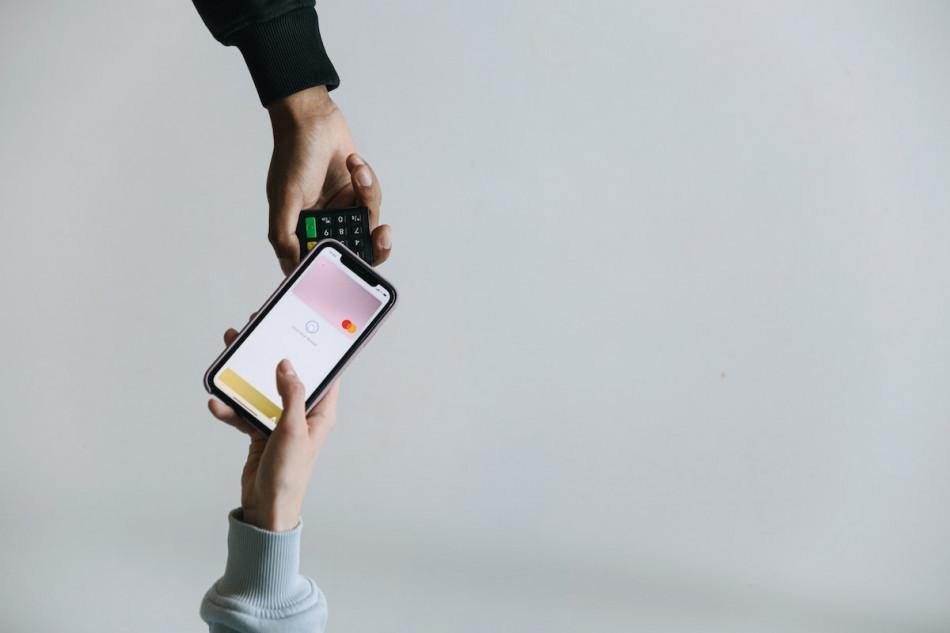If you search for "Japanese split culture", it is introduced as if it was a Japanese -specific culture to split it. However, in fact, the technology of "how easy it is to split" has developed according to the development of technology, and it seems that innovative payments and remittance services have become common in developed countries, especially in developed IT countries (and other developed countries. Even in Japan, online payments and split bills seem to gradually spread, including PayPay, a QR code payment, but it will not be the mainstream yet). In this article, I would like to compare and compare some of the "individual remittance services" that are popular in such worlds. [Photo] Smart device "EVERING" that can be settled with a ring Sweden is famous as a cashless country, but people in winter are low and in winter. Due to the characteristics of not going out much, the circulation of cash was poor, and it seems that it was ambitious to have a long time ago. Currently, the Swedish settlement method is the "credit card", but "Swish" jointly developed by major Swedish banks as a personal remittance service, including split bills. Swish is a payment application for smartphones. By using the "Bank ID" linked to the national ID and the bank account, and the telephone number, the remittance from your account to the opponent's account can be briefly given on the screen. Swish has gained high support from the Swedish people because of its thorough ease of use, such as remittance between individuals and no fees for receiving money. "CocoaPay" is an online payment and remittance service operated by cacao, which operates the most popular message application "KakaoTalk" in Korea. CocoaPay charges and manages money on a cocoaPay account instead of a bank account, making it easier to exchange money using apps. Even in Korea, the most useful payment method on the go is a "credit card", and in recent years, it is natural that credit cards have become established in high school students. yes. CocoaPay is set as a good function on the cocoa talk menu screen. On the other hand, "LINE", which is popular as a message application in Japan, should have "LINE Pay", which has the same functions as cocoaPay. Nevertheless, the fact that LINE Pay is not used very often in Japan is the difference in the flexibility of the "money form" in Japan in the cash society and the Creca culture in Korea. "Venmo" is one of the most popular applications in the United States as a personal remittance service. Venmo, a subsidiary of PayPal in 2012, has a startup in 2009 and has 40 million users as of 2020. From account creation to money remittance and receipt, basic services do not have any commissions. The setting is easy, and by linking your bank account, credit card or debit card to the venmo account, it is directly deducted (however, 3%when using a credit card or payment. There is a commission. For users who have not verified identity, the limit for one week is 299.It is $ 99, but if you verify your identity, the limit is 4,999..It is expanded to $ 99. It will be enough for a personal remittance service for everyday use. It is easy to register for remittance and receiving partners. Venmo users between friends on Facebook will be listed on the search screen without searching for the other party's username, email, telephone number, QR code, etc. on Facebook. The message app that is popular in the United States is "Whatsapp". WhatsApp is a mechanism to register a friend by exchanging phone numbers, so unlike Japan, you can check the other party's phone number. In that case, it would not be troublesome to remit money to someone who is not in front of you. Recently, it seems that it is commonplace to send money to the landlord's venmo, etc., and when studying abroad in the United States, we should prepare WhatsApp and venmo (however, Venmo is in the United States as of February 2022. It only supports phone numbers). Several causes have been considered that cashless does not penetrate in Japan. For example, cashlessness is not a top priority for the government and the people, and as an earthquake -powered country, he has experienced secondary disasters such as "nationwide internet communication problems", so he has completely accumulated money. It is certainly a convincing perspective, such as feeling anxious about online. However, trusting cache and sticking to the cache are different, and unless you flexibly respond to cashlessness without letting go of the good points of the cache, you will not be able to keep up with the world economy. 。 Even if you are not interested in these perspectives, if you incorporate a "dropping" button on the home screen of the remittance app, the "cashless split" may spread at once in the cash -based Japanese society. (References) https: // www.swish.NU/FAQ/Private/? Category = Frequently-ASKED-QUESTTPS: // JA.Wikipedia.Org/wiki/swish_ (%E9%9b%BB%E5%E5%AD%90%E6%B1%BA%E6%B8%88) https: // Ecnomikata.COM/ECNEWS/31311/#: ~: Text =%E3%82%B92%E3%83%E3%E3%E3%83%9B%94%A8%E7%8%8%87%E3%81%AE82%bfhttps: // www.smbc-card.Com/MEM/Hitotoki/COLUMN/SWEDEN.jsphttps: // www.forbes.Com/Advisor/Banking/Zelle-vs-venmo/https: // www.BusinessofApps.Com/Data/Venmo-Statistics/https: // Hatchstudioinc.com/archives/40747https: // wise.com/jp/blog/How-to-us-venmohttps: // help.venmo.COM/HC/EN-us/ArticleS/209690188-RequirementShttps: // News.nicovideo.JP/Watch/nw8942439
Nana Yamaguchi


